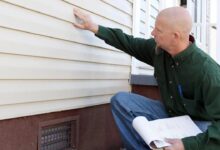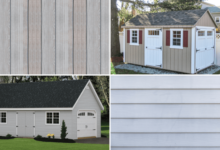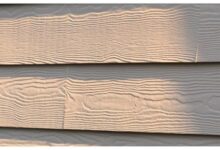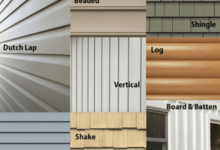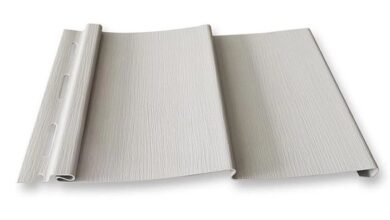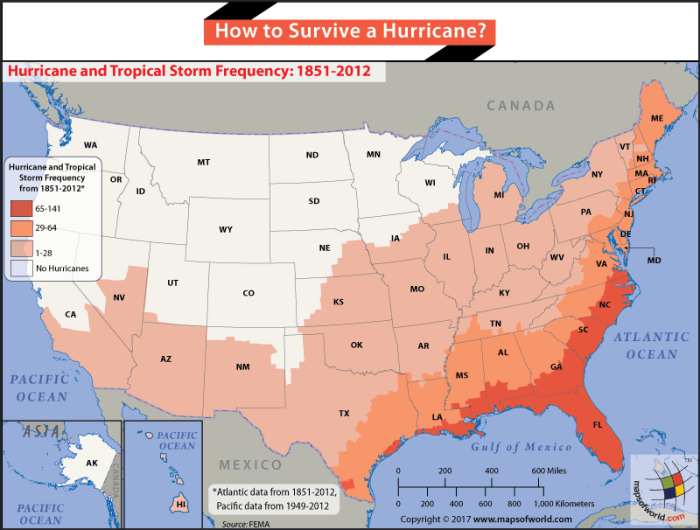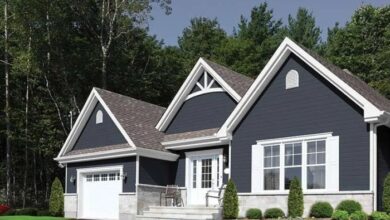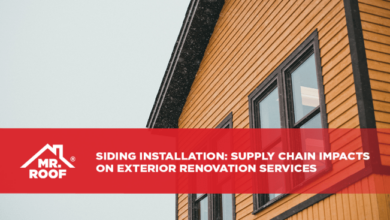Cedar Shake Siding A Comprehensive Guide
Cedar Shake Siding: Imagine a home clad in the warm, rustic beauty of natural cedar, a testament to enduring style and timeless appeal. This isn’t just siding; it’s a statement. From its unique manufacturing process to its surprisingly low environmental impact, cedar shake siding offers a blend of aesthetic charm and practical advantages that few other materials can match.
We’ll delve into every aspect, from installation tips to long-term cost analysis, empowering you to make an informed decision about this classic cladding choice.
This guide explores the multifaceted world of cedar shake siding, covering everything from material properties and installation techniques to aesthetic considerations and long-term value. We’ll compare it to other siding options, analyze its environmental footprint, and even offer practical maintenance advice to ensure your investment remains stunning for years to come. Get ready to unlock the secrets of this enduringly popular exterior.
Cedar Shake Siding
Cedar shake siding, a classic choice for homeowners seeking natural beauty and enduring quality, offers a unique blend of rustic charm and modern sophistication. Its inherent characteristics, from its manufacturing process to its inherent variability, contribute to its enduring appeal and distinct aesthetic. Understanding these properties is crucial for making informed decisions regarding material selection, installation, and long-term maintenance.
Cedar Shake Siding Manufacturing
The creation of cedar shake siding begins with the selection of high-quality cedar logs, typically Western Red Cedar or Alaskan Yellow Cedar, known for their inherent durability and resistance to decay. These logs are then processed through a series of steps including debarking, sawing into blocks, and finally, splitting or sawing into individual shakes. The thickness and taper of each shake are carefully controlled to ensure consistent quality and dimensional accuracy.
Finally, the shakes are graded, sorted, and prepared for packaging and distribution. The entire process emphasizes the preservation of the natural characteristics of the wood, resulting in a product that is both visually appealing and structurally sound.
Cedar Shake Siding Grades and Classifications
Cedar shake siding is graded according to several factors, primarily its appearance and structural integrity. Common grades include “Premium,” “Standard,” and “Utility,” with “Premium” exhibiting the least imperfections and “Utility” displaying more knots and variations in color and texture. These grades dictate not only the aesthetic appeal but also the cost of the material. Furthermore, classifications often include specifications regarding shake length, thickness, and taper, influencing the overall look and performance of the finished siding.
Higher-grade shakes are often chosen for prominent areas of a home, while lower-grade shakes might be used in less visible locations to optimize material usage and minimize costs.
Cedar Shake Siding Durability and Lifespan
Compared to other siding materials, cedar shake boasts a unique combination of durability and longevity. While vinyl siding might offer a longer warranty period, its susceptibility to damage from impact and its relatively short lifespan (20-30 years) pales in comparison to cedar’s potential lifespan of 50 years or more, particularly with proper maintenance. Fiber cement siding, while more durable than vinyl, lacks the natural beauty and inherent character of cedar.
Cedar’s natural oils provide inherent resistance to decay and insects, extending its lifespan significantly. However, proper installation and regular maintenance, such as periodic staining or sealing, are essential for maximizing its longevity and protecting against the elements.
Natural Variations in Cedar Shake Siding
The natural beauty of cedar shake siding stems directly from the inherent variations in color and texture found in each individual shake. No two pieces are exactly alike. Expect to see variations in color ranging from light golden hues to deep reddish browns, influenced by the tree’s age, growth conditions, and the type of cedar used. Texture also varies, with some shakes displaying a smoother surface while others exhibit a more rustic, rough-hewn appearance.
These natural variations contribute to the unique character and charm of cedar shake siding, making each installation one-of-a-kind. This natural variation is a defining characteristic of the material, not a defect.
Cedar Shake Siding Cost Comparison
The cost of cedar shake siding varies significantly depending on the grade and quality of the material. Higher grades, such as Premium, command a premium price due to their superior appearance and fewer imperfections.
| Grade | Cost per Square Foot (USD) | Notes | Example Use Case |
|---|---|---|---|
| Premium | $6 – $12 | Fewest imperfections, consistent appearance | High-visibility areas of a luxury home |
| Standard | $4 – $8 | Moderate imperfections, acceptable variation | Majority of siding on a mid-range home |
| Utility | $2 – $5 | More knots and variations, suitable for less visible areas | Less visible areas, such as the back of a house |
Cedar Shake Siding Installation and Maintenance
Cedar shake siding offers a timeless, rustic aesthetic, but its longevity depends heavily on proper installation and diligent maintenance. Understanding the intricacies of installation and developing a proactive maintenance plan are crucial for preserving the beauty and structural integrity of your cedar shake siding for years to come. This guide provides a comprehensive overview of the process, from initial preparation to long-term care.
Tools and Equipment for Cedar Shake Siding Installation
Successful cedar shake siding installation requires the right tools. Improper tools can lead to damage, inefficiency, and ultimately, a less aesthetically pleasing and less durable final product. A well-equipped installer will significantly reduce the time spent on the project and improve the overall quality of the work.
- Measuring tape and level: Essential for accurate measurements and ensuring straight lines.
- Circular saw and reciprocating saw: Used for cutting shakes to size and managing intricate cuts around windows and doors.
- Hammer and nail gun: For securing shakes to the sheathing. A nail gun significantly speeds up the process.
- Safety glasses and gloves: Protecting yourself from flying debris and splinters is paramount.
- Scaffolding or ladder: Safe access to all areas of the wall is crucial, especially for taller buildings.
Step-by-Step Cedar Shake Siding Installation Guide
The installation process involves several key steps, each demanding precision and attention to detail. Skipping steps or rushing the process can lead to significant problems down the line. Therefore, a methodical approach is essential.
- Prepare the wall: Ensure the underlying sheathing is properly installed and level. Any imperfections will show through the siding.
- Install starter course: This establishes a level base for the rest of the siding. Accurate placement is critical for a straight, even finish.
- Apply shakes: Overlap shakes according to manufacturer’s instructions, typically 1/3 to 1/2 the length of the shake. Maintain consistent spacing and alignment.
- Cut and fit shakes: Use a sharp saw to cut shakes around windows and doors. Precise cuts ensure a clean, professional look.
- Secure shakes: Use galvanized nails to fasten shakes to the sheathing, avoiding overdriving nails which can cause splitting.
- Caulk gaps: Fill any gaps between shakes and around windows and doors with a high-quality exterior-grade caulk.
Cedar Shake Siding Maintenance and Preservation Best Practices
Regular maintenance is vital for extending the lifespan of your cedar shake siding. Neglecting maintenance can lead to premature deterioration, necessitating costly repairs. A proactive approach minimizes long-term expenses.
Regular cleaning, using a soft brush and water, removes dirt and debris. Annual inspections help identify and address minor issues before they escalate into major problems. Proper staining and sealing every 3-5 years, depending on climate and exposure, protects the wood from moisture damage and UV degradation. Consider using a high-quality, water-repellent stain to preserve the natural beauty of the cedar while providing protection.
Common Cedar Shake Siding Installation Problems and Solutions
Certain challenges frequently arise during installation. Understanding these potential problems and their solutions allows for proactive mitigation and efficient problem-solving.
| Problem | Solution |
|---|---|
| Uneven siding | Check wall sheathing for levelness; use a level during installation; adjust shake placement as needed. |
| Splitting shakes | Use galvanized nails of appropriate length; avoid overdriving nails; pre-drill holes for particularly hard shakes. |
| Gaps between shakes | Ensure proper overlap during installation; use caulk to seal gaps after installation. |
Preventative Maintenance Schedule for Cedar Shake Siding
A scheduled maintenance plan is crucial for maximizing the life of your cedar shake siding. A preventative approach minimizes the need for extensive repairs and ensures lasting beauty.
Regular cleaning and inspection are vital. A thorough cleaning and stain/seal application every 3-5 years will protect your investment.
Cedar Shake Siding: Aesthetic Considerations
Cedar shake siding offers a timeless appeal, capable of transforming a home’s exterior into a captivating masterpiece. Its natural texture and versatility allow for seamless integration into diverse architectural styles, adding depth and character to any property. Understanding the aesthetic possibilities of cedar shake siding is key to maximizing its impact and achieving the desired visual outcome.
Design Styles and Architectural Applications
Cedar shake siding’s adaptability makes it suitable for a wide range of architectural styles. From rustic cabins nestled in mountainous regions to contemporary homes in urban settings, the material’s natural beauty transcends stylistic boundaries. Its inherent texture complements both traditional and modern designs, offering a unique blend of warmth and sophistication. For instance, a traditional farmhouse might benefit from a darker, more weathered stain, enhancing its rustic charm, while a modern minimalist home could be beautifully accented with a lighter, more natural finish, emphasizing clean lines and simplicity.
The key is to choose a finish and application method that aligns with the overall design aesthetic.
Cedar Shake Siding and Home Styles
The versatility of cedar shake siding extends to its ability to enhance various home styles. Rustic homes benefit from the natural texture and varied tones of the shake, creating a harmonious blend with the surrounding landscape. Traditional homes can be elegantly upgraded with cedar shake siding, adding a touch of classic charm and sophistication. Modern homes can incorporate cedar shake siding to create a striking contrast, balancing the natural warmth of the wood against clean lines and minimalist design.
Even contemporary designs can incorporate cedar shake effectively, particularly when used as an accent wall or in carefully planned architectural details. The choice of stain color and application technique can further amplify this effect.
Staining and Finishing Options
A broad spectrum of staining and finishing options exists for cedar shake siding, each offering a unique aesthetic outcome. Natural finishes allow the wood’s grain and color variations to shine through, emphasizing its organic beauty. Stains can enhance the wood’s natural tones or dramatically alter its appearance, offering a range from subtle earth tones to bold, vibrant hues.
Clear sealants protect the wood from the elements while maintaining its natural look, while pigmented sealants provide color and protection simultaneously. The selection depends on the desired aesthetic and the level of protection needed.
Impact of Staining Techniques
Different staining techniques significantly influence the final appearance of cedar shake siding. A solid stain completely obscures the wood grain, creating a uniform color across the surface. This is ideal for achieving a bold, modern look or for creating a consistent color scheme. Conversely, a semi-transparent stain allows the wood grain to show through, providing a more natural and rustic appearance.
The choice between these techniques directly affects the overall aesthetic, with solid stains offering a clean, contemporary feel and semi-transparent stains creating a more organic and textured look. Distressed finishes, achieved through techniques like dry brushing or applying multiple coats with varied opacity, can add character and age to the siding, evoking a sense of history and rustic charm.
Cedar Shake Siding Applications: A Visual Exploration
Imagine a quaint New England cottage, its walls clad in a medium-toned, semi-transparent stain of cedar shake siding. The natural grain is subtly visible, contributing to a feeling of warmth and traditional charm. The subtle color variations create depth and visual interest, complementing the cottage’s quaint design. The overall aesthetic is one of rustic elegance. Contrast this with a sleek, modern home featuring vertical cedar shake siding, stained a deep charcoal grey.
The solid stain creates a clean, contemporary look, accentuating the home’s architectural lines. The dark color provides a striking contrast against the surrounding landscape, making a bold statement. This image projects a sense of sophistication and minimalist design. Finally, consider a sprawling ranch-style home, its siding adorned with a lighter, natural-toned cedar shake, treated with a clear sealant. The wood’s natural beauty is highlighted, emphasizing its texture and grain.
The light color reflects light, creating a feeling of spaciousness and openness. The overall effect is one of relaxed, casual elegance.
Cedar Shake Siding

Cedar shake siding offers a timeless aesthetic appeal, but its environmental impact is a crucial factor to consider before installation. Understanding the sustainability of cedar, its sourcing, and end-of-life management is key to making an informed decision about this popular cladding material. This section delves into the ecological footprint of cedar shake siding, comparing it to alternatives and examining the lifecycle of this natural product.
Sustainability and Environmental Friendliness of Cedar Shake Siding
Cedar, a naturally renewable resource, holds a certain level of inherent sustainability. Responsibly harvested cedar forests can contribute to carbon sequestration, helping to mitigate climate change. However, the environmental impact isn’t solely determined by the wood itself; harvesting practices, transportation, manufacturing, and disposal all play significant roles. The overall sustainability depends heavily on responsible forestry management and the choices made throughout the product’s lifecycle.
For example, sustainably managed forests that prioritize replanting and biodiversity protection minimize the environmental impact significantly compared to those with less rigorous practices.
Carbon Footprint Comparison
Comparing the carbon footprint of cedar shake siding to alternatives like vinyl or fiber cement siding requires a holistic lifecycle assessment. While cedar’s carbon sequestration potential is a positive factor, the energy consumed in harvesting, processing, transporting, and installing the material must be considered. Vinyl siding, often produced from petroleum, generally has a higher carbon footprint due to its energy-intensive manufacturing process.
Fiber cement, a composite material, also has a significant embodied energy, although it’s generally lower than vinyl. A comprehensive comparison would need to factor in the longevity of each material; a longer-lasting cedar shake roof might have a lower overall carbon footprint than a shorter-lived vinyl option, even considering the initial higher carbon footprint of cedar harvesting and processing.
Sourcing and Harvesting Practices
The environmental impact of cedar shake siding is significantly influenced by the sourcing and harvesting methods. Sustainable forestry practices, such as selective harvesting and replanting, are essential to minimize damage to ecosystems and maintain biodiversity. Certification programs, like the Forest Stewardship Council (FSC), provide assurance that the wood originates from responsibly managed forests. Looking for FSC-certified cedar ensures that the material comes from sources that adhere to strict environmental and social standards.
Conversely, unsustainable harvesting practices can lead to deforestation, habitat loss, and soil erosion, significantly harming the environment.
Disposal and Recycling Options
At the end of its lifespan, cedar shake siding can be disposed of in several ways. In some regions, it may be suitable for composting or mulching, returning nutrients to the soil. Alternatively, it can be used as firewood, although this is dependent on local regulations and the condition of the wood. Recycling options are limited for cedar shake siding, unlike some other materials.
However, the biodegradable nature of cedar means it will eventually decompose, unlike synthetic alternatives which persist in landfills for centuries. The disposal method should always align with local regulations and waste management guidelines.
Pros and Cons of Cedar Shake Siding from an Environmental Perspective
Before making a decision, carefully weigh the environmental implications. Here’s a summary:
- Pros: Renewable resource; potential for carbon sequestration; biodegradable; aesthetically pleasing, potentially reducing the need for frequent replacements.
- Cons: Energy consumption in harvesting, processing, and transportation; limited recycling options; potential for unsustainable harvesting practices if not sourced responsibly; susceptibility to insect damage and decay, potentially shortening lifespan.
Cedar Shake Siding: Cost and Value
Cedar shake siding offers a timeless aesthetic appeal, but its cost and long-term value are crucial considerations for homeowners. Understanding the initial investment, maintenance needs, and potential return on investment is key to making an informed decision. This section will analyze the financial aspects of cedar shake siding, comparing it to alternatives and exploring its impact on home value.
Initial Cost Comparison
Cedar shake siding typically commands a higher initial price compared to vinyl, fiber cement, or aluminum siding. The cost difference stems from the material’s natural origin, the labor-intensive installation process, and the premium associated with its unique appearance. For instance, while vinyl siding might cost between $3 and $12 per square foot, cedar shake can range from $10 to $30 or more, depending on the grade and thickness of the shakes.
This price discrepancy should be weighed against the potential long-term benefits and aesthetic advantages.
Long-Term Cost-Effectiveness
While the upfront cost is higher, cedar shake siding boasts a remarkably long lifespan, often lasting 30-50 years or even longer with proper maintenance. This longevity translates to reduced replacement costs over the life of the home, offsetting some of the initial expense. Regular maintenance, including cleaning and occasional stain or sealant applications, is essential to prolong the life and aesthetic appeal of the siding.
Neglecting maintenance, however, can lead to premature deterioration and increased repair costs. A well-maintained cedar shake exterior can significantly reduce the need for costly repairs or replacements in the long run, proving more cost-effective than some less durable options that may require more frequent replacements.
Impact on Home Value
Cedar shake siding is often viewed as a high-end, luxury material, which can significantly increase a home’s market value. Appraisers frequently recognize the aesthetic appeal and durability of cedar shake, leading to higher appraisals compared to homes with less desirable siding materials. A recent appraisal in a comparable neighborhood showed a 5-10% increase in value for a home with cedar shake siding compared to similar homes with vinyl siding.
This increase is further enhanced when the shake siding is impeccably maintained and complements the overall architectural style of the house.
Factors Influencing Installation Costs
Several factors contribute to the overall cost of cedar shake siding installation. The size and complexity of the project are significant variables; larger homes or those with intricate architectural details require more labor and material, leading to a higher overall cost. The grade and thickness of the cedar shakes also impact the price; higher-grade shakes with thicker profiles cost more.
Regional variations in labor costs and material availability further influence the final price. Furthermore, the need for additional work, such as repairing underlying sheathing or installing flashing, can add to the overall expense.
Cedar Shake Siding Choices and Appraisal Value
The type of cedar shake siding chosen—whether hand-split, machine-sawn, or a combination—influences the final cost and perceived value. Hand-split shakes, known for their rustic charm and unique texture, tend to command a higher price than machine-sawn shakes, which offer a more uniform appearance. The color and finish of the shakes also contribute to the overall aesthetic and, consequently, the appraised value.
A darker, richer stain can create a more luxurious look, potentially increasing the home’s perceived value. A recent case study demonstrated that homes with high-grade, hand-split cedar shake siding in a desirable neighborhood sold for an average of 15% more than comparable homes with standard vinyl siding.
Final Thoughts
Ultimately, choosing cedar shake siding is about more than just aesthetics; it’s an investment in quality, longevity, and curb appeal. While the initial cost might be higher than some alternatives, the long-term value, low maintenance (with proper care), and undeniable charm make it a compelling choice for homeowners seeking a truly unique and enduring exterior. Understanding the nuances of installation, maintenance, and the material’s properties will ensure your cedar shake siding remains a source of pride and beauty for decades to come.
So, are you ready to embrace the natural elegance of cedar?

